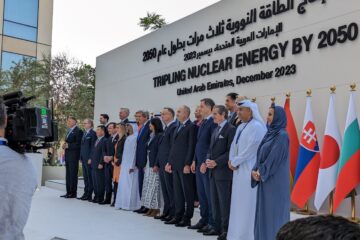We often hear that financing is a major issue for nuclear projects that creates significant impediments to new projects moving forward. There are myriads of thoughts and ideas on how to fix this, from various clever project contractual structures to identifying new non-traditional sources of funds. But other than stating “financing nuclear projects is difficult”, what are the issues? After all, we can’t solve a problem if we don’t fully understand it. For this post, we are not going to talk about solving problems. Rather in the first of a series of posts on financing, let’s start by understanding some of the basics.

The reality is there is lots of money in the world looking for good places to invest. So, the question becomes – are nuclear projects attractive to investors? To answer that question, let’s not think about financing as an input to developing a project, let’s consider it as an outcome. In other words, if we successfully structure a project, getting the risk profile right, with an appropriate revenue stream; then our nuclear project should attract the necessary funds to proceed.
Fundamentally attracting investment is all about managing risk. Investors want to put their money into investments where they understand the risk and are then appropriately compensated for taking on this risk.
What are some of the key risks related to a new nuclear project?
- Size – these projects are generally very big and require large volumes of funds. Projects in excess of $10 billion are common.
- Duration – nuclear plants take a relatively long time to build (6 to 10 years) meaning there is more risk of things going wrong before the plant is completed and the asset starts to generate revenue.
- Credit worthiness of the owner/operator – Only the largest companies have the capacity to raise the volume of funds required on their balance sheet. Even the largest nuclear utilities often seek out partners to raise all the funds necessary for large nuclear new build.
- Project performance – there is a history of large infrastructure projects (not just nuclear plants) struggling to be completed on time and on budget – with numerous examples of projects taking years longer and being completed at much more than the original planned costs and schedule.
- Political risk / bias – there are many governments and other nongovernmental actors that work to ensure nuclear is unable to raise capital on ideological grounds.
- ESG – there is growing interest in ensuring capital flows to environmentally sustainable and ethically run projects. There are those that do not think nuclear is ESG compliant.
- Operating performance – as a mature industry there is good experience with plant operations and as such, nuclear operators are generally able to raise the funding needed for ongoing operations.
What does this all mean? There is much work to do to successfully finance new nuclear projects that can include:
- Reducing the size and duration of the project – this is one of the primary goals of Small Modular Reactors (SMRs) – to reduce project risk by making them smaller and faster.
- Structuring the project to reduce the risk to investors – we hear of many ideas for project structure that allocate less risk to investors, moving the risk to industry, government, or the customer, depending upon the model.
- Ensuring the environmental attributes are recognized and that governments support nuclear as a sustainable option for the future – being excluded from the sustainable finance market greatly reduces the funds available – the long battle to get nuclear into the European taxonomy is testament to how those opposed try to ensure funding is made unavailable to nuclear projects.
- Developing knowledge and capability in the financial community to be able to understand and assess nuclear projects.
Most of all, it is about project performance. If investors know that the project is likely to deliver on its financial projections, there will be interest to participate. This does not solve everything, as managing political risk and raising large volumes of funds will always create challenges.
What we do know, is that more and more countries agree that nuclear is needed to achieve their net zero 2050 goals and to address energy security issues. This is resulting in a renewed interest for new nuclear that will literally require trillions of dollars to deliver in the decades ahead. We will talk further about some of the solutions above and their impact in more detail in later posts.





5 Comments
Charles Gordon · February 5, 2023 at 10:47 pm
Excellent background Milt
Ian Grant · February 5, 2023 at 11:46 pm
Excellent introduction to nuclear finance issues Milt! Thanks!
A. Gupta · February 6, 2023 at 4:10 am
Excellent background Mitt. I’d also add that for an investor or financier, the amount of work required to diligence a nuclear project and its risks is a massive resource drag. So why would a financier or investor do that much work to deploy funds when they are other projects available at a fraction of the diligence!? So nuclear developers should think about packaging the proposition in a way that reduces this diligence requirement too. Thanks.
William K Marshall · February 6, 2023 at 8:05 am
Good job Milt and Terry! We need more of this if we are to achieve 2050 goals.
Cameron Nevay · February 6, 2023 at 11:44 am
Thanks for the background and financing primer, Milt. Hope you’re doing well.
Comments are closed.